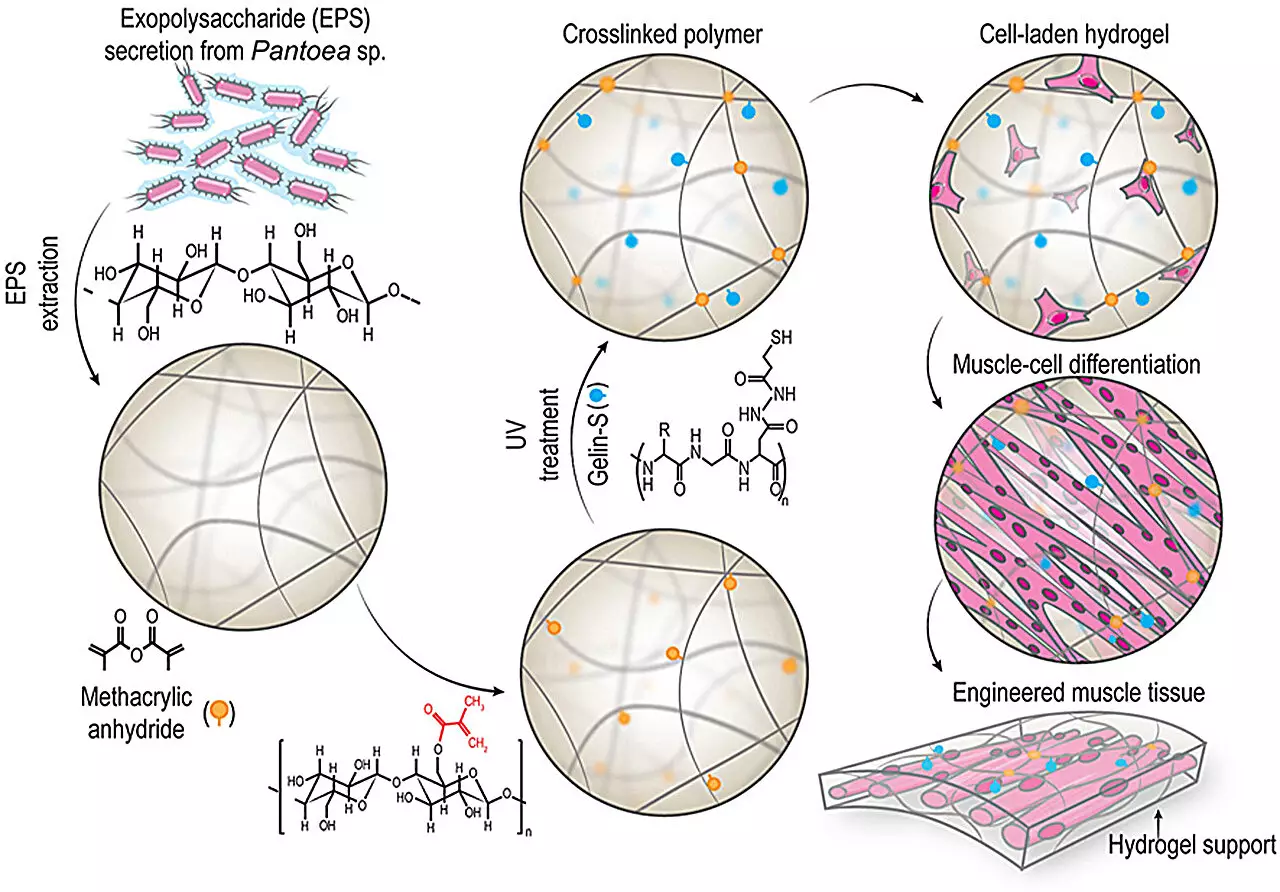Recent research conducted at the Technical University of Denmark marks a significant leap forward in tissue engineering and regenerative medicine. Led by Alireza Dolatshahi-Pirouz, the team is exploring an untapped source of healing: bacteria. By utilizing the inherent production capabilities of these microorganisms, researchers have successfully created a new biopolymer with impressive tissue-repair characteristics. This advancement paves the way for novel applications in cell therapy, particularly for muscle tissue regeneration.
The biopolymer in question, known as Pantoan Methacrylate or PAMA, emerges from this innovative research. Distinct in its properties, this polymer is synthesized from bacterial sources and has been shown to foster muscle regeneration. Central to this study is the development of a hydrogel that is not only durable and resilient but also retains exceptional elasticity—all critical attributes for effective muscle repair. The findings published in the journal Bioactive Materials underscore the promise of this new “bactogel,” which demonstrates the potential to address significant challenges in treating muscle injuries.
Preliminary in vivo tests involving rats indicate that the PAMA-based hydrogel significantly enhances muscle tissue formation while simultaneously minimizing the formation of fibrous tissue. Notably, the hydrogels boast nearly 100% mechanical recovery, making them particularly valuable in musculoskeletal medicine, where mechanical strength is crucial. Associate Professor Dolatshahi-Pirouz points out that such an intersection of mechanical resilience and biocompatibility is uncommon in the realm of bioactive hydrogels, which often lack the necessary strength to perform effectively in challenging environments like muscles.
The implications of this research extend beyond simply healing muscle injuries. Dolatshahi-Pirouz envisions a future in which bacteria-derived biopolymers can transform treatment methodologies not just for athletes and the elderly, but also for military personnel and individuals exposed to traumatic injuries. The innovative use of PAMA could facilitate the recovery of patients with a variety of muscle-related ailments, significantly improving their quality of life.
What is particularly exciting is the concept of integrating these bacterial-derived polymers with muscle progenitor cells or stem cells, which Dolatshahi-Pirouz believes could enhance healing results dramatically. He imagines a revolutionary approach where patients might utilize “regenerative bacto-baths,” in which beneficial bacteria produce healing compounds on demand. This vision not only reflects the potential to treat injuries more effectively but also emphasizes a paradigm shift in how we approach regenerative medicine.
The development of PAMA and its application in muscle tissue regeneration stands as a remarkable advancement in scientific research. By tapping into the healing power of bacteria, the team at the Technical University of Denmark is forging new paths in tissue engineering, showcasing a future where biological solutions could redefine recovery scenarios across diverse populations.


Leave a Reply